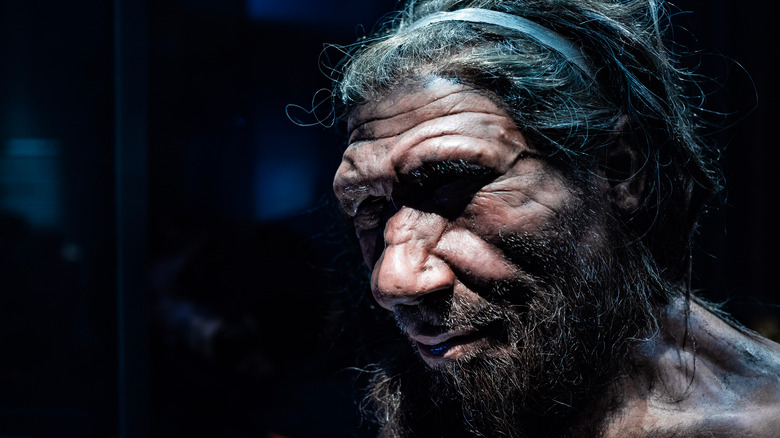Here's How Neanderthals Handled Funeral Arrangements
It's hard to know just how early humans handled the death of others. Did they love each other? Did they grieve at the loss of a member of their group? Did they practice compassionate care, or help put a dying person out of their misery? According to new evidence (that is actually building on older evidence), at the very least, Neanderthals cared enough to bury their dead. What's more, it looks like they even adorned the bodies and graves with flowers.
This matters, because it informs modern humans — us — that our prehistoric ancestors may have had the capacity for symbolic thought as far back as 35,000 to 65,000 years ago. That's how old some of the skeletal remains found in Iraq's Shanidar Cave were when first discovered in the 1950s, according to Smithsonian Magazine.
The flower theory has been controversial since the initial discovery of pollen-laden cave-graves in the mid-20th century. Some scientists argued that the pollen found near the bodies of the buried Neanderthal could have been brought in by certain rodents who bring flowers into their burrows (via Nature). But a newly-discovered 70,000-year-old Neanderthal skeleton is convincing more scientists that the ancient relative of homo sapiens did in fact bury their dead with flowers. According to Stories in Science, Neanderthal burial sites included yarrow, cornflowers, St. Barnaby's Thistle, and hollyhocks.
Neanderthals seem to have dealt with their dead much like we do today
The lead researcher in the search for more clues about Neanderthal in the Shanidar Cave, University of Cambridge osteologist and paleoanthropologist Emma Pomeroy, told The Times of Israel, "From initially being a skeptic based on many of the other published critiques of the flower-burial evidence, I am coming around to think this scenario is much more plausible ... If Neanderthals were using Shanidar Cave as a site of memory for the repeated ritual interment of their dead, it would suggest cultural complexity of a high order."
According to an article by the research team at Cambridge University, while it's been questioned whether the original skeletons discovered in the cave were intentionally buried, or if they died inside the cave another way and time did its work, the new skeleton provides "strong evidence for the deliberate burial of this individual." The Cambridge researchers are also working to assess is whether the burials happened as a quick succession in which all the individuals may have died, or if it was a burial ground used in more of an ongoing way, more like the way modern humans use cemeteries.
If so, it may turn out Neanderthal are closer to modern humans than we realized. After all, Neanderthals may have been the pioneers of the practice of utilizing flowers in death ceremonies, a practice continued by humans around the world throughout recorded time, and a practice that continues even today.

